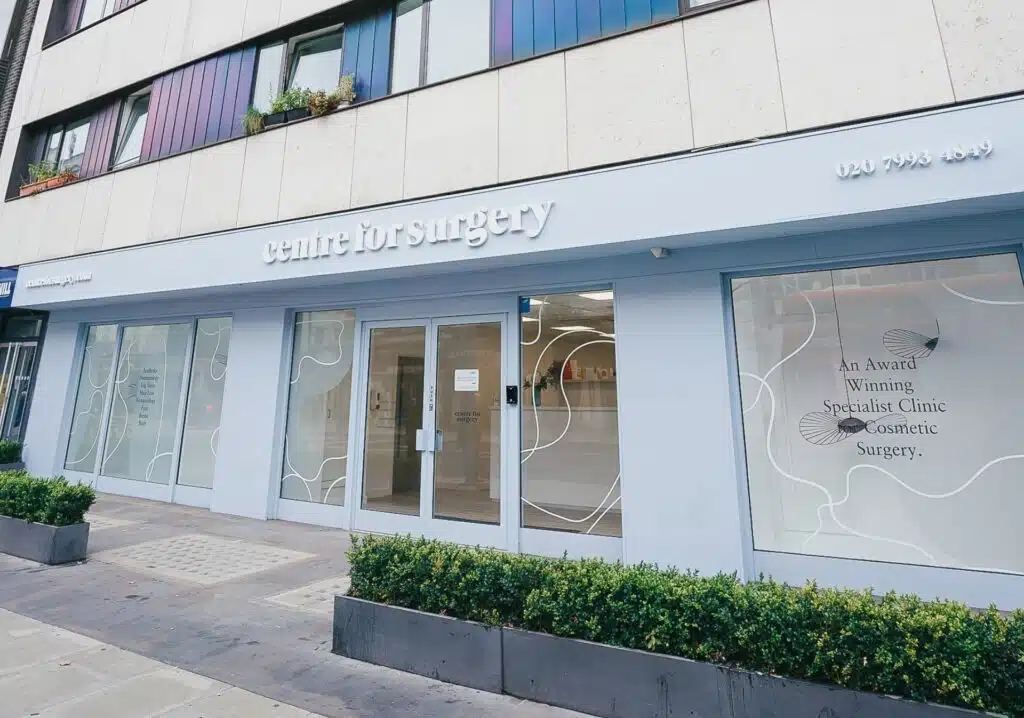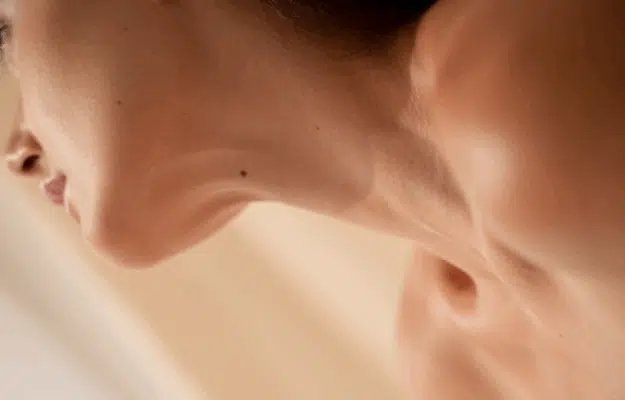Over the age of 30, the natural ageing process begins to impact the appearance of our facial features. Collagen is the key protein responsible for maintaining the skin’s elasticity. When levels of collagen begin to decline, there are several recognised consequences that may lead us to look older than we actually are. What often begins as fine lines and wrinkles eventually progress to the development of sagging skin under the influence of gravity. When self-confidence becomes affected, people begin to look for ways to achieve a more youthful-looking appearance. Early signs of ageing may not require invasive facelift surgery. Ideal treatments at this stage often include fat transfer to the face or dermal fillers.
Both fat transfer and dermal fillers have pros and cons. If you are keen to explore the differences between them, we recommend consulting with a consultant plastic surgeon at the Centre for Surgery. Here, we discuss the benefits of fat transfer vs. fillers.
What is fat transfer to the face?
Understanding the benefits of fat transfer or fillers first requires an understanding of what each treatment involves. Fat transfer, or fat grafting or lipofilling, is a two-step procedure. The first part of any fat transfer procedure involves removing fat from another part of the body, such as the inner thighs, abdomen or buttocks. Before the fat can be re-injected, it must be processed to remove impurities, often performed in a centrifuge. The prepared fat is then injected into targeted areas of the face. Fat transfer is known for producing natural-looking results. As we age, we begin to lose volume from certain areas of the face, such as the cheeks, and this may be associated with an increase in saggy skin. Fat transfer to the face is particularly effective for:
- Treating bags under the eyes
- Getting rid of jowls
- Improving the appearance of sunken or flattened cheeks
- Getting rid of a gaunt-looking face
Unlike facelift surgery, which is more appropriate for extensive signs of ageing, facial fat transfer can be carried out in younger age groups as a minimally invasive alternative.
What are dermal fillers?
Dermal fillers contain hyaluronic acid and are used to treat early signs of ageing. Hyaluronic acid occurs naturally within the body, and the risk of allergic reactions is, therefore, minimal. For people who may not be keen on the idea of surgery, fillers are a great alternative for achieving anti-ageing effects without any downtime. Compared with fat transfer, dermal fillers are not a permanent treatment, although results can last over 12 months, depending on the treatment performed. Dermal filler treatment is an excellent non-surgical alternative to improve early signs of facial ageing. Dermal fillers can be used for many areas of the face, including:
- Cheeks
- Lips
- Nasolabial folds or nose-to-mouth lines
- Under eye or tear trough
- Jawline
- Chin
- Temples
There are a wide variety of different brands of dermal filler. Here at Centre for Surgery, Our specialists are experts in the use of Juvederm, Belotero and Restylane.
How do you choose between fat transfer and fillers?
Face fat transfer and dermal fillers are both designed to achieve similar results, although fat transfer is a minimally invasive surgical procedure and dermal fillers are a non-surgical treatment. When considering choosing between fat transfer vs fillers, it is important to be aware the benefits of each treatment.
Fat transfer
Fat grafting involves using your body fat to enhance facial features without artificial implants. Fat transfer to the face produces long-lasting results compared with dermal fillers. Fat transfer is considered to be a two-in-one procedure. The first step involves performing liposuction to remove fat, and patients can benefit from an improved body contour, including a flat stomach. Fat can be injected into targeted areas of the face to address early signs of ageing. Research has shown fat cells to have regenerative effects, leading to an improvement in skin quality.
RELATED: What does fat transfer recovery involve?
Dermal fillers
Dermal fillers are an effective non-surgical treatment to reduce the appearance of fine lines and wrinkles. Patients can return to their normal activities immediately after treatment. Results are noticeable after 48 hours once bruising and swelling have settled down.
What are the disadvantages of fat transfer vs dermal fillers?
When considering cosmetic treatment, it is important to be aware of both the benefits and risks associated with the procedure. A detailed consultation with a consultant plastic surgeon can give you the necessary understanding to make a decision on the right treatment for you. There are certain aspects of both treatments that you should be aware of.
Disadvantages of fat transfer
As with any fat transfer procedure, a small proportion of fat will be naturally reabsorbed. In some cases, further pop-up treatment may be needed to enhance the results. Choosing an experienced fat transfer surgeon at Centre for Surgery will minimise this risk. Centre for Surgery is known as a centre of excellence for fat transfer. Fat transfer costs more compared with dermal fillers as it is a surgical procedure involving sophisticated medical equipment. Many patients accept the higher cost of fat transfer surgery as it can produce long-lasting results. Results may take 2 to 3 weeks after fat transfer due to postoperative swelling. Patients must comply with post-operative care instructions to get the best possible results.
Disadvantages of dermal fillers
Dermal fillers are a temporary treatment with results lasting anywhere between six months and 18 months. Once dermal fillers have worn off, the body will naturally absorb them. Although dermal fillers are cheaper, they could work out more expensive with regular treatments needed over time. Fillers are a very safe treatment with minimal risk of complications occurring. Dermal fillers involve the injection of synthetic hyaluronic acid, which may, in very rare cases, result in an allergic reaction or cause skin necrosis.
Should I choose fat transfer or fillers?
The choice between fat transfer or fillers depends on your treatment expectations and your tolerance for downtime after treatment. If you want to improve the overall fullness or plumpness of the face, then fat transfer to the face could be ideal for enhancing the under eyes, cheeks or jawline. Dermal fillers can also enhance soft tissue volume in the face but are better suited to treating lines and wrinkles. Choosing between fat transfer and dermal fillers can be helped by consulting with a specialist surgeon at Centre for Surgery. In many cases, it may be recommended to have a combination treatment involving both fat transfer and dermal fillers to achieve impressive anti-ageing effects without the need for more invasive surgery.










